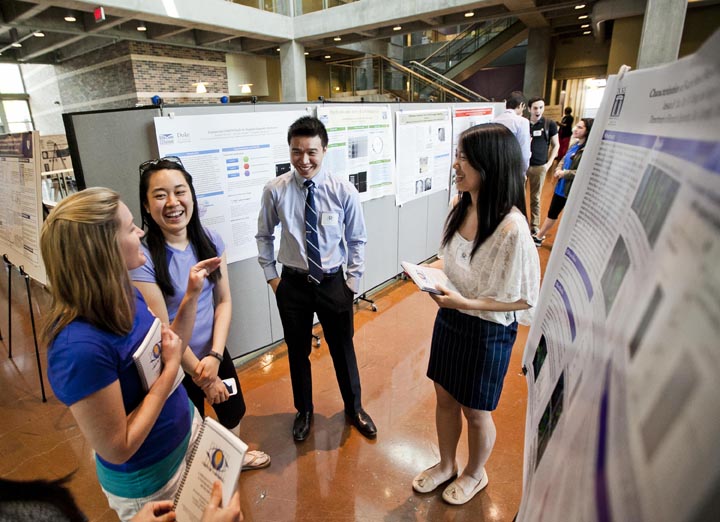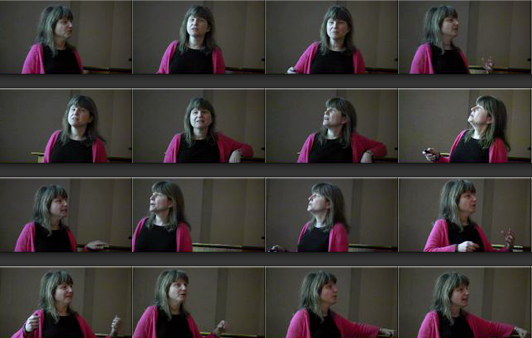By Ashley Mooney
Senior biology major and chemistry minor Rachel Shenker is working as a Dean’s Summer Research Fellow, trying to figure out how certain proteins affect wound-healing in flies.
In particular, she’s working with a protein called integrin, a cell surface signaling protein found in every animal from sponges to humans. Shenker, who is from Rockville Centre, New York, is studying how the protein is involved in fruit fly embryo development and wound healing.
Using fluorescent dyes and a microscope, Shenker is able to see where the protein of interest is in the fly embryos as they develop. She also records images of the embryos for later comparisons.
“What I find really interesting about it is to see how the smallest protein can really change an entire organism,” Shenker said. “Every organism has it in different combinations, so that’s why it’s really relevant to humans and other animals.”

This is the alpha subunit of an integrin receptor. Fruitfly receptors have 5 of these; mammals have 18. (Credit: European Bioinformatics Institute)
Shenker is still trying to understand how integrins function in normal fly embryos, and has not yet started experiments that involve wounding the embryos and observing their reactions. She said once she has a better idea of how the proteins work, she will begin wound-healing experiments.
Shenker conducted similar research in high school and decided to get involved in Biology Professor Daniel Kiehart’s lab after seeing his name in several published papers. She began working in his lab during orientation week of her freshman year, and has been doing research and independent studies ever since. Shenker will use her current research to complete a senior thesis this year.
Beyond her involvement with research, Shenker volunteers at the Duke Cancer Center, is involved with the Jewish Student Union and participates in Greek life. She is also on the executive board of Duke Global Medical Brigades, and has gone on a few trips to Honduras with the program.
“We went to some of the rural areas of Honduras and volunteered in a clinic that we set up to help provide basic healthcare to citizens who really needed it,” she said. “It was a great experience that really put me out of my comfort zone.”
Shenker is currently applying to medical school.













